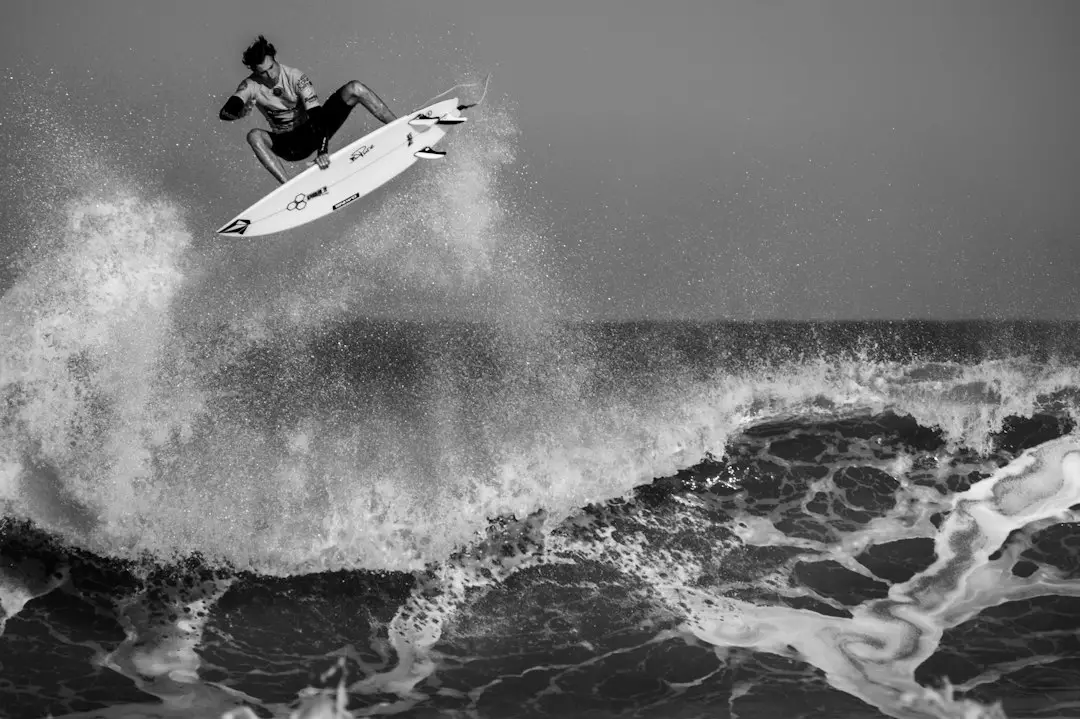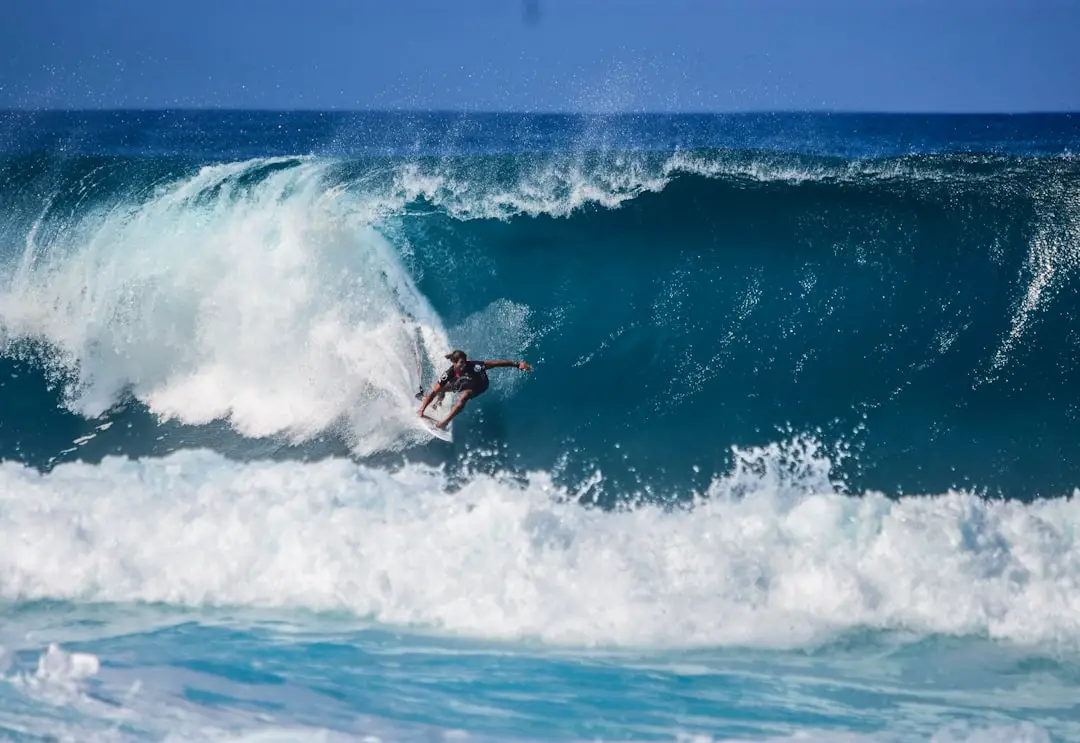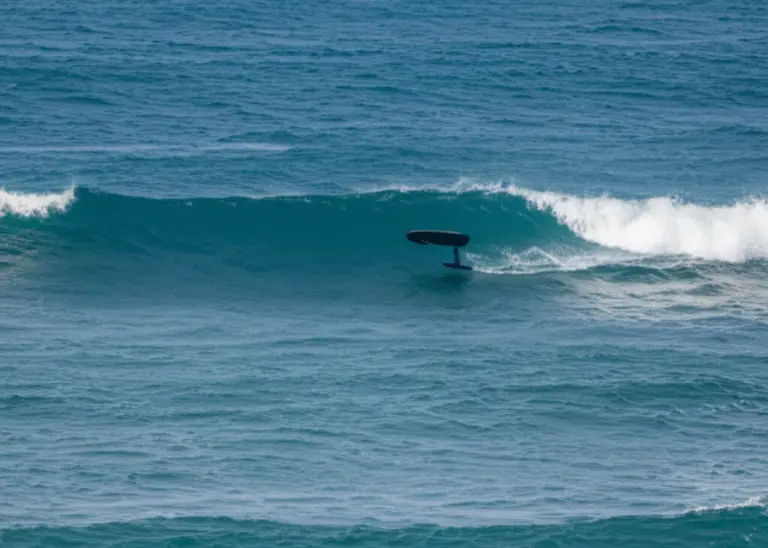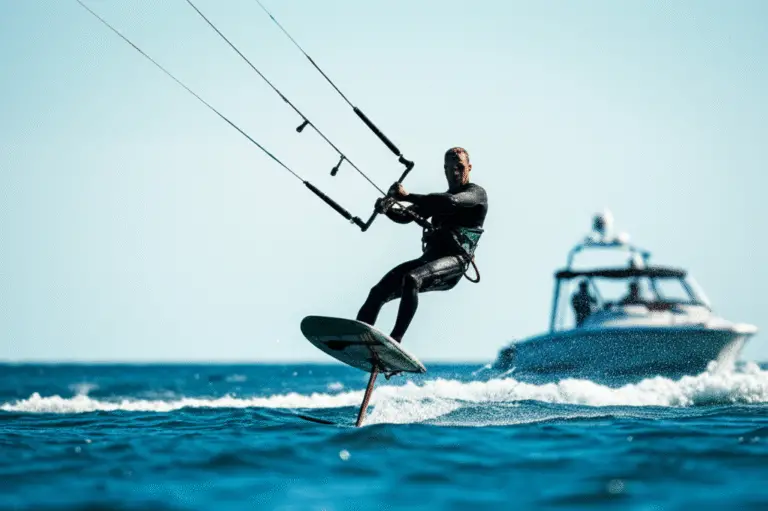Support our hydrofoil educational content for free when you purchase through links on our site. Learn more
Is Hydrofoil Harder Than Surfing? [2024] 🏄♂️
Have you ever wondered if hydrofoiling is harder than traditional surfing? Well, you’re not alone! Hydrofoiling, also known as surf foiling, is a relatively new water sport that combines elements of surfing and foiling. It involves riding a specially designed board with a hydrofoil wing underneath, which lifts the board out of the water as speed increases. But is it more challenging than regular surfing? Let’s dive in and find out!
Quick Answer
✅ Hydrofoiling is generally considered more difficult than traditional surfing due to the added complexity of balancing on the foil and controlling its movement. However, with proper instruction, practice, and determination, anyone can learn to hydrofoil and enjoy the unique thrill it offers.
Quick Tips and Facts
Before we delve deeper into the topic, here are some quick tips and facts about hydrofoiling:
- Hydrofoiling allows you to ride above the water’s surface, giving you a sensation of flying.
- It requires a certain level of physical fitness, balance, and coordination.
- Learning to hydrofoil can take time and patience, but the rewards are well worth it.
- Hydrofoiling can be done on various bodies of water, including oceans, lakes, and rivers.
- It’s important to follow safety guidelines and wear appropriate protective gear, such as helmets and impact vests.
Now that we have a basic understanding, let’s explore the background and history of hydrofoiling to gain a deeper insight into this exciting water sport.
Hydrofoil: The Evolution of Surfing
Hydrofoiling has its roots in the early 20th century when inventors began experimenting with hydrofoil technology. The concept involves using a wing-like structure, called a hydrofoil, to lift a vessel out of the water, reducing drag and increasing speed. Over the years, hydrofoils have been used in various applications, including boats, sailboats, and even seaplanes.
In recent years, hydrofoiling has made its way into the world of surfing, revolutionizing the sport and opening up new possibilities for riders. By attaching a hydrofoil wing to a specially designed surfboard, riders can experience a whole new level of speed, maneuverability, and freedom on the water.
How Does Hydrofoil Surfing Work?
To understand why hydrofoiling is considered more challenging than traditional surfing, let’s take a closer look at how it works:
- The Foil Design: A hydrofoil consists of a mast, fuselage, and wings. The wings generate lift as water flows over them, allowing the board to rise above the surface.
- Speed and Balance: Hydrofoiling requires maintaining a certain speed to generate lift. Balancing on the foil and controlling its movement is crucial for stability and maneuverability.
- Reduced Friction: The hydrofoil’s design reduces friction with the water, allowing for easier speed maintenance and the ability to ride smaller or non-breaking waves.
Is Hydrofoiling Difficult to Learn?
Learning to hydrofoil can be challenging, especially for those without prior experience in water sports. Here are some factors that contribute to the learning curve:
- Balance and Coordination: Hydrofoiling requires a high level of balance and coordination. Balancing on the foil and adjusting your body position to control the board’s movement takes practice and patience.
- Physical Fitness: Hydrofoiling engages various muscle groups, including your core, legs, and arms. Building strength and endurance will help you handle the physical demands of the sport.
- Experience Helps: While prior surfing experience is not necessary, it can be beneficial. Familiarity with wave dynamics and board control can give you a head start in learning to hydrofoil.
What Size Foil Should You Use?
Choosing the right size foil is essential for your hydrofoiling experience. Here are some considerations:
- Mast Size: The mast’s length depends on your expertise level and the water depth. Beginners typically start with shorter masts (around 60-75cm) for stability, while more advanced riders may opt for longer masts (75-100cm) for increased maneuverability.
- Wing Sizes: The size of the front and rear wings affects stability and speed. Larger wings provide more lift and stability, making them suitable for beginners. Smaller wings offer increased maneuverability and speed, ideal for experienced riders.
What Type of Board Should You Use?
Choosing the right board is crucial for a successful hydrofoiling experience. Here are some key considerations:
- Flat and Short: Foil boards are typically flat and shorter than traditional surfboards. The flat shape helps with stability and control, while the shorter length allows for quick maneuvering.
- Beginner vs. Expert Boards: Foil boards designed for beginners are often wider and heavier, providing more stability and control. Expert boards are narrower and lighter, allowing for higher speeds and more aggressive maneuvers.
Can You Surf with a Hydrofoil?
Absolutely! One of the unique aspects of hydrofoiling is its versatility. You can surf with a hydrofoil on various wave types, including small or non-breaking waves. Hydrofoiling allows you to ride waves that were previously inaccessible, expanding your surfing possibilities and providing a whole new level of excitement.
What Speed Do You Hydrofoil at?
The speed at which you hydrofoil depends on various factors, including your skill level, wave conditions, and the design of your foil. Generally, hydrofoiling speeds range from 8 to 25 miles per hour (13 to 40 kilometers per hour). As you gain experience and confidence, you can push the limits and reach higher speeds.
FAQ

Is riding a hydrofoil hard?
Hydrofoiling can be challenging, especially for beginners. It requires a combination of balance, coordination, and physical fitness. However, with proper instruction, practice, and determination, anyone can learn to hydrofoil and enjoy the unique thrill it offers.
Read more about “How much does a hydrofoil cost? … 💰”
How long does it take to learn to hydrofoil?
The learning curve for hydrofoiling varies from person to person. Some individuals may pick it up quickly, while others may require more time and practice. On average, it can take several weeks to months to become proficient in hydrofoiling. Consistent practice and dedication are key to mastering this exciting water sport.
Read more about “Are Hydrofoil Boards Hard to Ride? … 🏄♂️”
Can you surf with a hydrofoil?
Yes, hydrofoiling allows you to surf on various wave types, including small or non-breaking waves. It enables you to ride waves that were previously inaccessible, expanding your surfing possibilities and providing a whole new level of excitement.
Read more about “Can you surf with a hydrofoil?”
What speed do you hydrofoil at?
Hydrofoiling speeds can range from 8 to 25 miles per hour (13 to 40 kilometers per hour), depending on various factors such as skill level, wave conditions, and foil design. As you gain experience and confidence, you can push the limits and reach higher speeds.
Read more about “Can You Hydrofoil Behind Any Boat? 5 Things You’ll Need …”
Conclusion

In conclusion, hydrofoiling is generally considered more challenging than traditional surfing due to the added complexity of balancing on the foil and controlling its movement. However, with proper instruction, practice, and determination, anyone can learn to hydrofoil and experience the exhilaration of riding above the water’s surface.
If you’re up for the challenge and ready to take your surfing to new heights, hydrofoiling is an incredible sport to explore. It offers a unique blend of speed, maneuverability, and freedom that will leave you craving more.
So, grab a hydrofoil board, hit the water, and prepare to embark on an unforgettable hydrofoiling adventure!
Recommended Links
- 👉 CHECK PRICE on: Hydrofoil Boards | Wetsuits | Helmets
- Hydrofoil Basics
- Hydrofoil Equipment Reviews
- Advanced Hydrofoiling Techniques
- Hydrofoil Training
- Hydrofoil History
- Are Hydrofoil Boards Hard to Ride? 2024 🏄♂️



